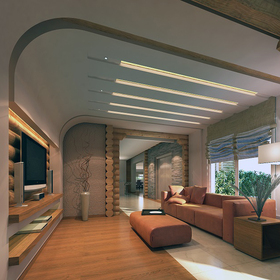
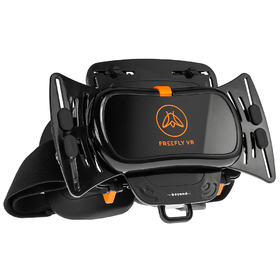
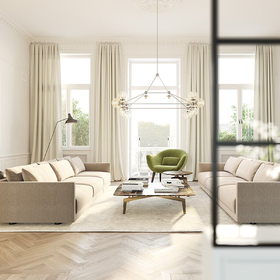
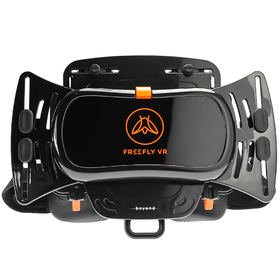
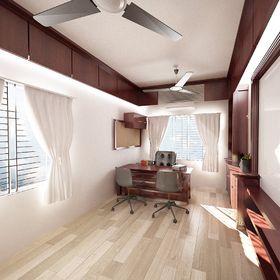
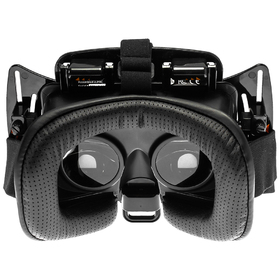
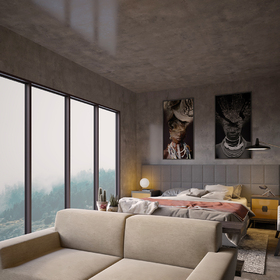







There are plenty of movies and novels where people are able to travel anywhere they want and do anything they wish using virtual reality. The 2018 hit Ready Player One is just one example of such a reality-altering world. But this isn’t only the stuff of science fiction anymore.
It’s very real, and it’s here to stay.
Virtual reality (VR for short) is all over the place. Some of the biggest tech companies in the world have championed its rise, from Google and Qualcomm to Samsung and Facebook, whose Oculus VR technology is turning heads (pun very much intended) everywhere it goes. VR is becoming so mainstream it can even be found in mall kiosks, where for a few bucks people can ride a virtual roller coaster or hunt virtual Star Wars stormtroopers.
Even if it isn’t affordable enough for every living room to have one next to the TV, it’s gaining popularity while becoming cheaper. There’s even a VR headset from Google called Google Cardboard. Just slide a smartphone into the pasteboard pocket and voila, you have a VR headset.
With the advent of newer and cheaper technologies, it’s only a matter of time before VR gadgets become as common as laptop computers and Xbox consoles. In the meantime, there are many uses for virtual reality in an ever-expanding range of fields, many of them in CAD service and design space.
Though its technological capabilities and actual manifestation took some time to develop, the potential capacity for virtual reality has been in the public sphere for some time. As far back as the 1950s, people had conceptions for an ongoing and immersive experience through the use of stereoscopic visual devices. Fast-forward to the 1980s when a similar crop of technologists sought to bring a new kind of reality to the masses via the personal computer. These forebears—those still on this side of eternity—must have thought it was their collective birthday when, in the year 2016, the Oculus Rift arrived on the scene.
So, what is virtual reality, and why have so many leading technological thinkers and investors bet their entire careers and livelihoods on its promise? In a nutshell, virtual reality is an artificial environment, a digital world. The use of three-dimensional landscapes is not a requirement of VR, per se, but it has become somewhat synonymous in recent years and lends to it another degree of impact on the user.

The goal of utilizing virtual reality is to experience a lifelike interaction within simulated locations. Users immerse themselves in the world, virtual though it may be, and perceive it just as they would the physical world they interact with on a daily basis. Depending on the nature of the virtual reality program itself, they might be enabled to reposition elements of the environment and change it to meet their needs and desires at will.
People often wonder as well about augmented reality (AR) and how it differs from virtual reality. The primary difference between the two platforms is one of scope. AR simply supplements a user's view of the real world with computer-generated “add-ons” or “layers,” each of which can provide an enhanced way to interact with the environment.
Brands like IKEA and Amazon are implementing a version of this within their mobile apps for iPhone and Android. With this capability, shoppers can see what an item might look like in their homes without having to purchase the item, lug it home, and assemble it first. This can minimize the number of returned products and can save an enormous amount of time and energy in the consumer shopping process—time that can be spent for more shopping.
Sure, VR is, by comparison, the extrapolation of 3D renderings to an interactive environment, but those are just textbook terms. More excitingly, virtual reality is a brand-new world that does not augment, but substitutes for the “actual” world. You could even think of VR as SR, or substitute reality. That is the power and the essence of the technology. A person slides on the headset and can be dropped off anywhere in the world or be ferried to a new world altogether.
People can actually go "where no man has gone before" because the place itself did not exist before the advent of virtual reality. The aim of VR is to engender an organic, participatory experience that might otherwise be either impossible or impractical. There’s nothing textbook about that.
While most people focus on (or are only aware of) the consumer gaming applications of virtual reality, there are many more uses than that. Beyond the entertainment sector, there is a burgeoning industry for VR, and where else would you expect this inventive renaissance to find its footing than in the world of interior design and architecture?
As of late, newer and more exciting technologies have furnished many people working in design-related fields the ability to exhibit their creations—from sample renderings and mockups to fully completed designs—with increasing plausibility. When an architect can present a three-dimensional walkthrough tour of a home, condo, or commercial building, rather than a simple blueprint or artistic sketch, a professional demonstration can go from being simply informational to one that is fully transformational.
This is where virtual reality takes the reins and charges ahead into a bold, transfigured future. A presentation can be transformational, but VR can transport it to a whole new level. Imagine not simply seeing a 3D rendering but being in a three-dimensional world. This is the power (if not the magic) of virtual reality.
VR has the capacity to take clients and put them right in the middle of the action itself. Architects no longer need to ask potential customers to simply imagine how a building will look, because VR can present images so lifelike that they appear real. Our designers can take those painstakingly crafted renderings from Blender, SketchUp, Maya, AutoCAD, 3ds Max, or any other popular 3D software, and create a virtual-reality world. Your clients will see the renderings not as a flat approximation of three dimensions, but as a real-world simulation they can interact with.
Toms, a shoe company, has used virtual reality to transport people to a Peruvian village to show off one of their many charity trips where they give out shoes to locals in need. The impact goes beyond photos or even video to something immersive and deeply emotional.
In order to advertise one of their latest cookie creations, Nabisco and Oreo designed and animated a fantastical environment replete with streams made of milk and hills of chocolate. And the cable company XFINITY was able to reproduce the thrill of NASCAR by situating viewers in the virtual seat of a race car. All of this is possible thanks to the wizardry of VR.
But it doesn’t stop there. As mentioned above, architecture and design firms are also able to implement this technology to great effect. WHA Architecture in California, to cite just one example, uses AutoCAD, SketchUp, Lumion, and V-Ray to help their clients envision proposals before they are constructed. In addition to giving customers the chance to see something before it exists in the real world, VR has several additional cost-effective benefits, the firm points out, such as the ability to spot (and fix) errors in design or function before the foundation is even laid. With virtual reality, physical models also go the way of the historical dustbin, saving companies even more in terms of time and resources.
With virtual reality, you can take a virtual tour of floor plans, check out each individual room of the home, alter the paint color of the walls or material for the cabinets, switch out the floors or carpets, or even take a glance at how rooms would look under different lighting conditions during the day or at night, all from the comfort of a simple VR headset.
To learn more about the future of virtual reality in CAD design, click here!
Bringing Cad Crowd on board means that you can work with the world’s greatest 3D virtual reality rendering firms. We have a community of engineers and designers all over the globe with years of experience working with a wide range of CAD software across a diverse spectrum of businesses. Whatever your modeling needs, Cad Crowd can help you get exactly where you need to go. We can meet every design solution, regardless of the project field or scope.
We have the ability to help you by utilizing a range of rendering programs. Our network is made up of the best experts using the highest quality design software. Just let us know if there is a particular software package you need us to use, and we will locate the perfect designer or engineer for your project.
If you need help developing a model, take a look at all of our virtual reality 3D modeling services for help with starting the process. That said, Cad Crowd’s 3D VR services are also at the disposal of clients who currently have models in-hand and need further help with the task of rendering.
Cad Crowd is simply the best place for all your designing, drafting, engineering, and rendering needs. Start working with us today, and get your free quote!
Regardless of what type of project you have, our VR design companies and freelancers can satisfy your requirements. They're pre-vetted experts with years of experience working on all sorts of 3D modeling, rendering, and VR assignments. If you're interested, contact us today for a free quote!


